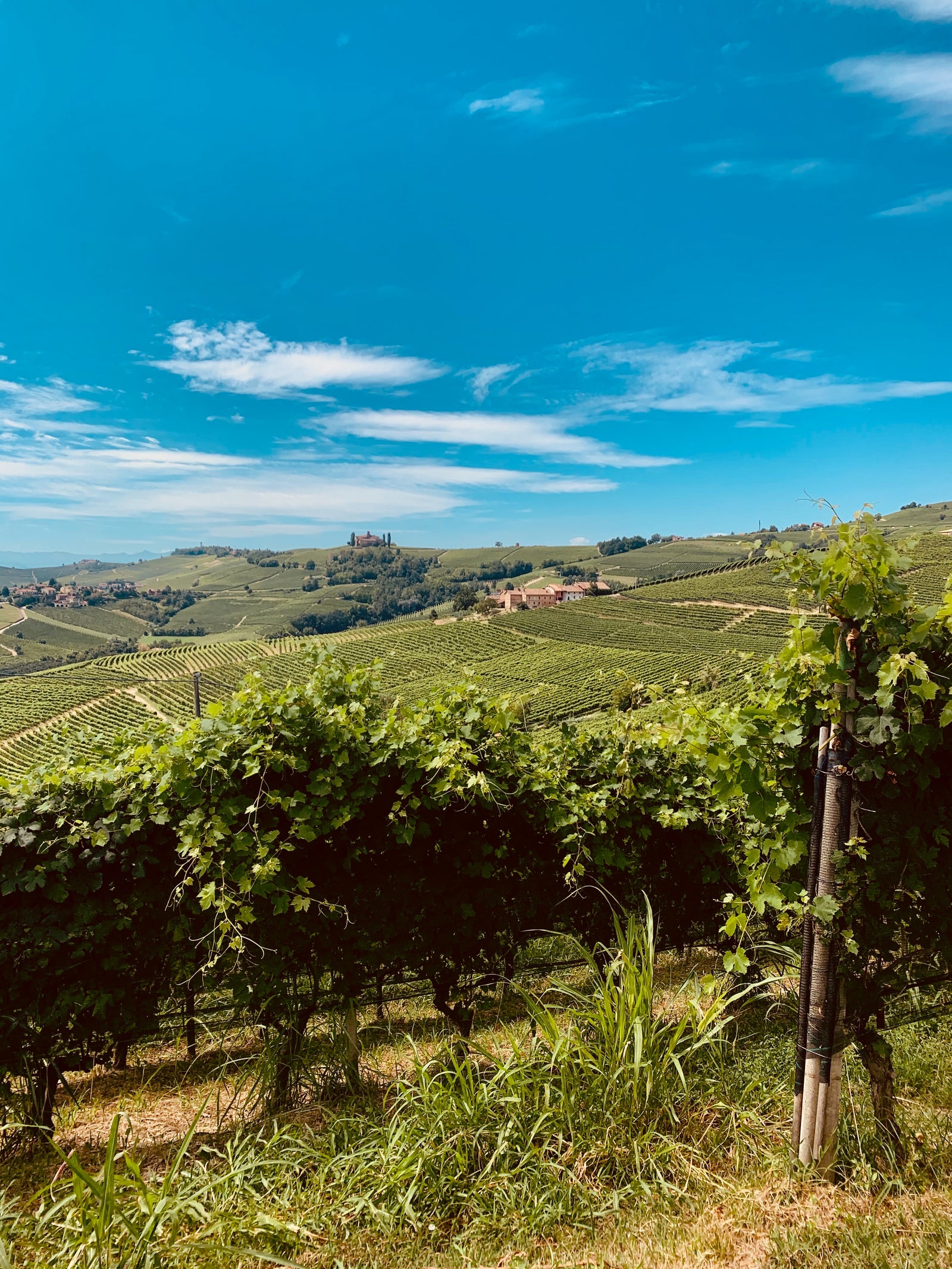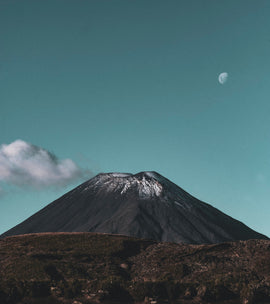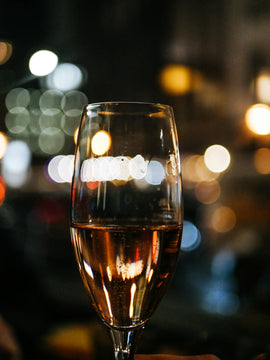PIEMONTE
As many of you know, 2022 brings a major change to the Italian Wine Club - Elio Longobardi, creator and curator of the club, retired at the end of 2021. For the last seven years, Elio brought matchless knowledge and passion to the task of selecting two new and outstanding Italian wines each month. Anyone lucky enough to be assisted by him, try these bottles, or read the beautifully rendered notes Elio wrote each month, understands the immense standard he set and how intimidating it is to follow in his footsteps. While we secretly hoped Elio would be critiquing, correcting and/or veto-ing our club choices from retirement, he has instead been frustratingly supportive. Grazie di Tutto, Elio! Everyone misses you already.
The good news is that, while exploring any of Italy’s 20 wine regions, there will always be different and delectable wines to discover. We hope all club members enjoy this month’s selections and as always, we welcome your comments, suggestions, and all the constructive heckling you would like to contribute!
Case in point: We are starting the new year in Piemonte, or Piedmont, Italy’s 2nd largest region (after Sicily) and along with Tuscany, arguably the most prestigious for wine. Piemonte is world-renowned for Barolo and Barbaresco, both made from the red Nebbiolo grape, and is also famous for the white varietals Arneis and Gavi. It’s also home to a seemingly endless lineage of less-heralded, but equally fascinating indigenous varietals, such as the white varietal Nascetta and the red, Pelaverga Piccolo, both of which are our first selections of 2022.
Originally from Novello, a tiny commune next door to Barolo, Nascetta (nahs-CHET-tah) is the only white varietal native to the Langhe. Popular in 19th century as a sweet wine, Nascetta was decimated by phylloxera, and virtually extinct by the mid-twentieth century, as local vintners focused on higher-yielding grapes like Cortese. With a semi-aromatic nose, and mineral-driven core, Nascetta is protean enough to serve as a rough Italian analogue to Chenin Blanc. It can present as light, herbaceous, and citrus-y, or full-bodied and tropical depending on vinification. It’s highly resistant to oxidation--often still delicious after being open a couple days, far too rare! It’s also age worthy, often taking on petrol, apple and wet wool notes with time. This month’s introduction to the rare Nascetta, hailing from some of the highest vineyards in Langhe, is a grippy, full-bodied take for a great winter white. You will be hearing and tasting more from us about Nascetta!
Produced in the northernmost of Barolo’s eleven communes, the mellifluously monikered Pelaverga Piccolo (up there with Cerasuolo in terms of loveliest Italian wine names) is the incredibly rare red grape in Pelaverga Verduno wines.
A similarly named yet totally different variety is called Pelaverga Grosso, is grown elsewhere in Piedmont, and used to make a wine called Cari. Like Naschetta, Pelaverga Piccolo, this months Italian red varietal, is thought to date back to the 19th century. It was almost completely extinct by the time Castello di Verduno’s own Gabriella Burlotto made the radical decision to plant a section of the family’s Massara vineyard to the varietal in the 70’s. Although Pelaverga Peccolo has become increasingly popular in the years since, it still exists in miniscule quantities – <20 hectares [50 acres] total in Verduno. Castello di Verduno’s bottling remains arguably the benchmark example, and we are excited to be able to present the 2020 vintage. It features all the varietal hallmarks - bright red ruby color, floral aromas, juicy red fruit and mouthwatering acidity, all ensconced in soft peppercorn spice – these characteristics together make Pelevarga distinctive and wonderfully versatile with food. Additionally, Castello di Verduno’s cuvee is called ‘Basadone’, meaning “little kiss” in local dialect and is a reference to Peleverga Piccolo’s rumored aphrodisiac properties: it could make an excellent Valen-wine!
PlumpJack Wine Buying Team
PlumpJack Wine & Spirits – Noe Valley
|
Region: Langhe, Piemonte |
About the Winery: Based in Dogliani, the southern-most part of the Langhe region, the Abbona family has been working their vineyards since the 1840’s.In the 1930’s, Anna's great-grandfather bought and cultivated the vineyards as a sharecropper. Soon after, Anna's grandfather took over the land, where an unfortunate blight occurred and forced him to graft the plants. This was the start of their wine company, with the vineyard initially called Maioli. Anna's father joined in his father and grandfather's footsteps during a time of industrialization where many moved towards the city and worked in factories. He chose to stay with the vineyards, eventually buying more land and adding to the property. However, in the following years, the wine was of poor quality, leaving them to sell their grapes to local cooperatives. In 1989 though, things took a turn when Anna's father announced they were going to sell their vineyards. Although Anna and her husband Franco were in different industries, they both took the bold decision of returning to the wine world with the goal of producing high quality wines. Their vineyards are high in altitude and among the steepest in the area, allowing for great exposure for their grape varieties. In more recent years, they have moved to organic farming Currently led by Anna Maria Abbona, the stellar combination of high-altitude sites, old vines and a commitment to farming at low yields puts her estate firmly in Dogliani’s elite. About the Winemaking: 5 - 10 years year old vines. Guyot vine training system. Clay and limestone marl soils 490 to 530 mt. above sea level with western exposure. Hand-harvested, in airy crates in the second half of Septemeber and vinifired in steel without skins at a controlled temperature of 16/18. Organic. Tasting Notes: Deep golden color. Aromas and flavors include green herbs, Meyer lemon, acacia flowers and stone fruit, including apricot; finishes with a honeyed note. |
|
Winemakers: Anna Maria Abbona |
|
|
Price per bottle / Price per case $25 $270 |
|
|
Suggested Food Pairing: Garlic butter cod and asparagus Roast chicken Pork shoulder with fennel and polenta Kale salad with pear and almonds .
|
|
|
Region Verduno, Piemonte |
About the Winery: Castello di Verduno is an historic Piemontese estate located in Verduno, the northernmost commune of Barolo. Verduno is a small town and the histories of the wineries located there are intertwined. The Castle of Verduno, constructed in the early 1500’s, was under the jurisdiction of the House of Savoy for much of its history until the Burlotto family purchased it in 1909. The Azienda GB Burlotto had already produced wine since the 1800’s. At the time, the current Burlotto proporietor, Giovanni Batitsta, had three sons: the first received the Castello di Verduno with vineyards (Castello di Verduno label), the second received the family house with vineyards (GB Burlotto label) and the third received a farmhouse and vineyards (Cascina Massara label). More recently, with the marriage of Gabriella Burlotto to Franco Bianco, whose family had vineyards and a winery in Barbaresco, Castello di Verduno gained precious parcels including a prime piece of the Rabaja cru – one of Barbaresco’s most prestigious sites. The winery has a total of 10 hectares – five in Verduno planted to Nebbiolo & Pelaverga and five in Barbaresco planted to Nebbiolo, Dolcetto and Barbera. Although Franco Bianco and his wife Gabriella are the titular heads of the estate, they have a very talented young winemaker, Mario Andrion, who has run the cellar since 2000. Mario was trained in Italy, but has also worked harvests in Oregon. Franco and Gabriella’s daughter Marcella is increasingly involved in daily operations. The winery’s philosophy is to produce classically styled and sustainable wines, with meticulous organic methods both in the vineyard and in the cellar. Mario uses minimal SO2 and vinifies with indigenous yeast. Their wines are firmly traditional in style yet never rustic--retaining a rare elegance and purity.
About the Winemaking: Sourced from vineyards in the Massara and Olmo crus, in the commune of Verduno on white limestone and clay soils. Hand-harvested in the first weeks of September. From four different parcels planted from 1972-2001. Practicing organic.Fermented in stainless steel for about ten days with periodic punching down of the cap.Aged for nine months in stainless steel followed by three months in the bottle before release. Tasting Notes: Aromas of nutmeg and black peppercorn on the nose, juicy black cherry strawberry and cranberry notes, with lip-smacking acidity on the palate, followed by a lingering, dry herb-accented finish. |
|
Winemaker Mario Andrion |
|
|
Price per bottle / Price per case $32 $345.6 |
|
|
Suggested Food Pairing: Mushroom Risotto Spiced Chicken Kabobs Penne Arriabiatta Spanikopita Salmon Curry |
|
Bagna Cauda (Piedmontese Warm Anchovy & Garlic Sauce)
Classic Piedmontese fall and winter shared dining ritual. It literally means “hot bath” because the mixture of garlic and anchovies is traditionally kept warm in a chafing dish or fondue pot. It is served with raw and cooked vegetables (see below for some options) and bread.
Sliced red or yellow bell peppers, Belgian endive, Radicchio, Savoy, red, or green cabbage, Radishes, Carrots, Celery, Fennel, Scallions, placed in a glass with some Pelaverga wine in it
NOTES This recipe can be scaled easily. Use the following quantities per person: 1 large head of garlic, 50 grams of salt-packed anchovies, 100 ml extra virgin olive oil, 1 pat of butter.
Find similar articles
club cornerdry white wineitalianitalian wineitalian wine clubitalyred winewhite wine




